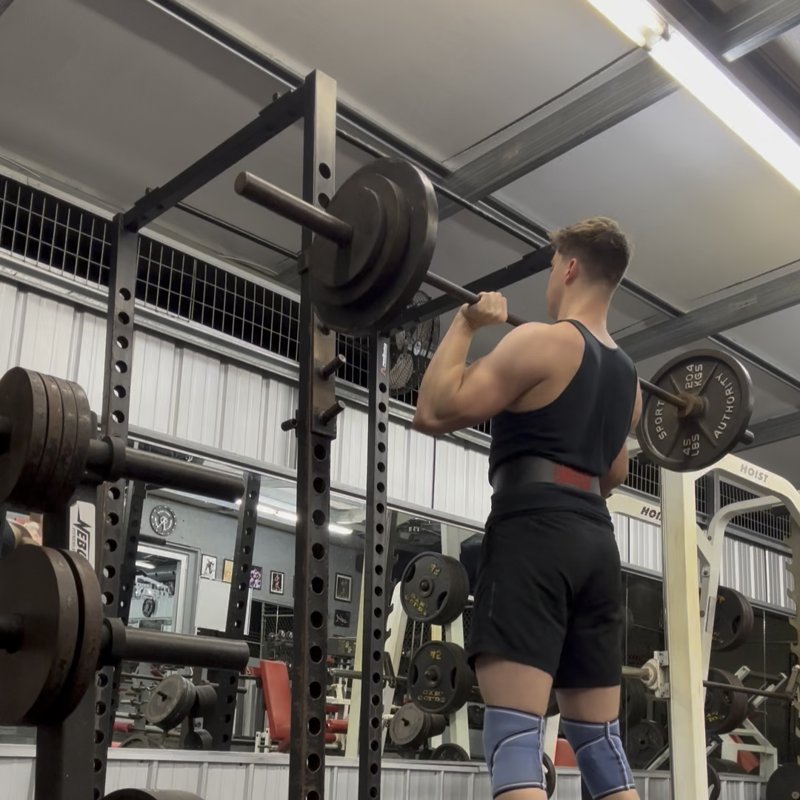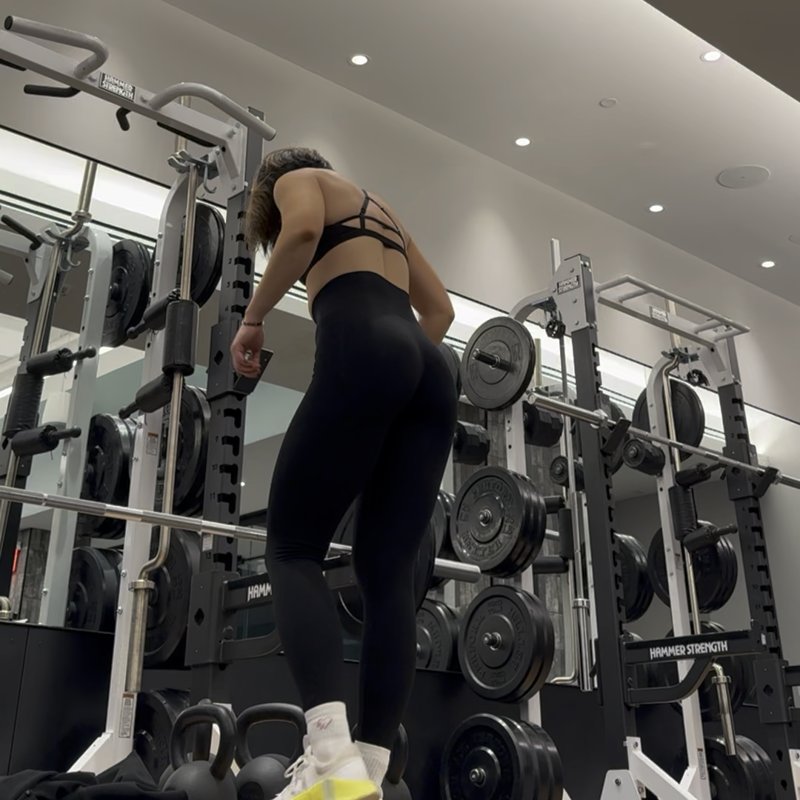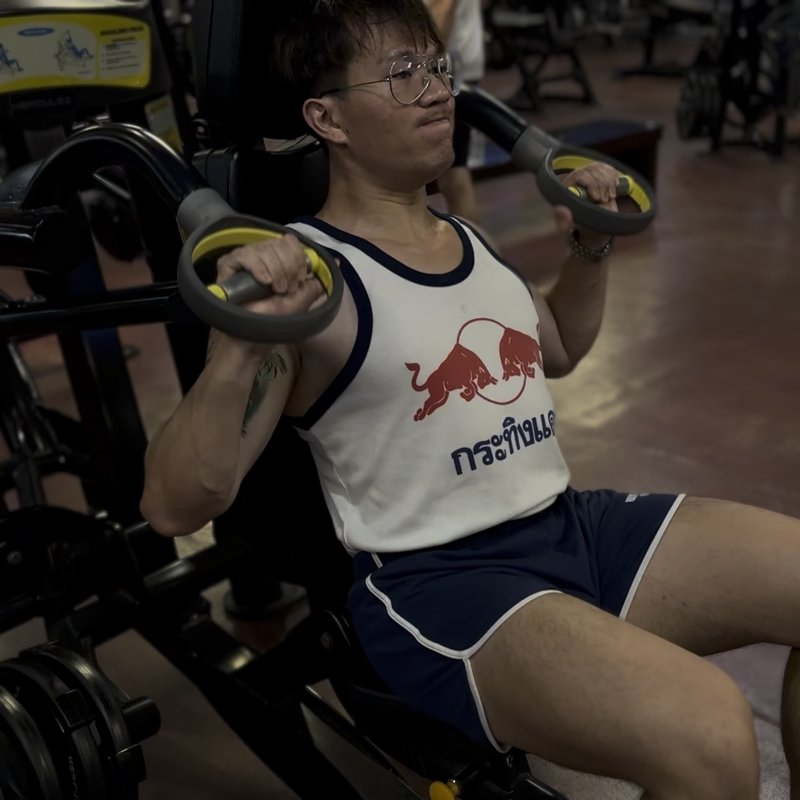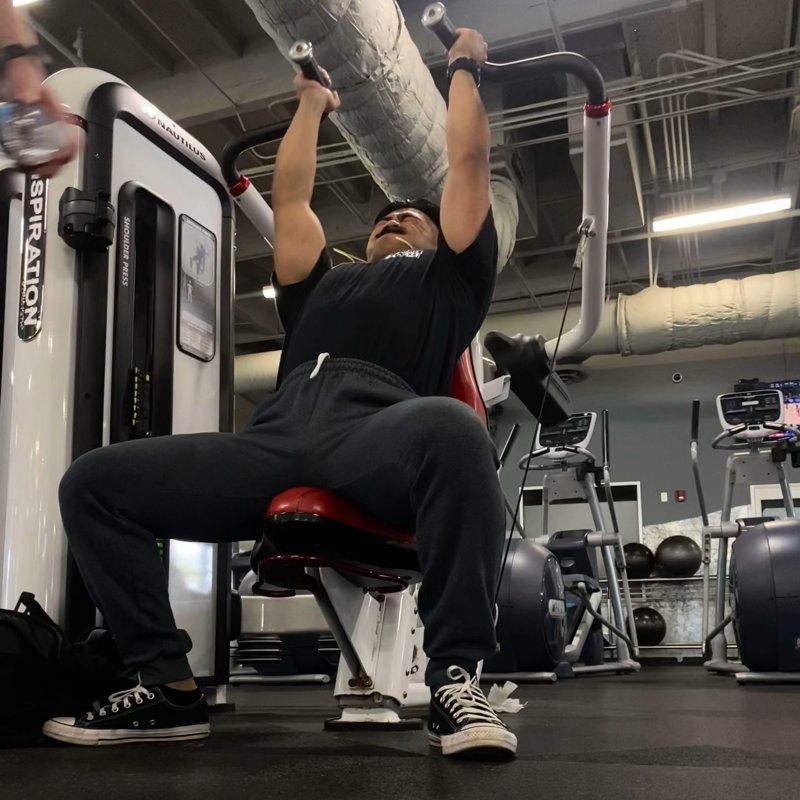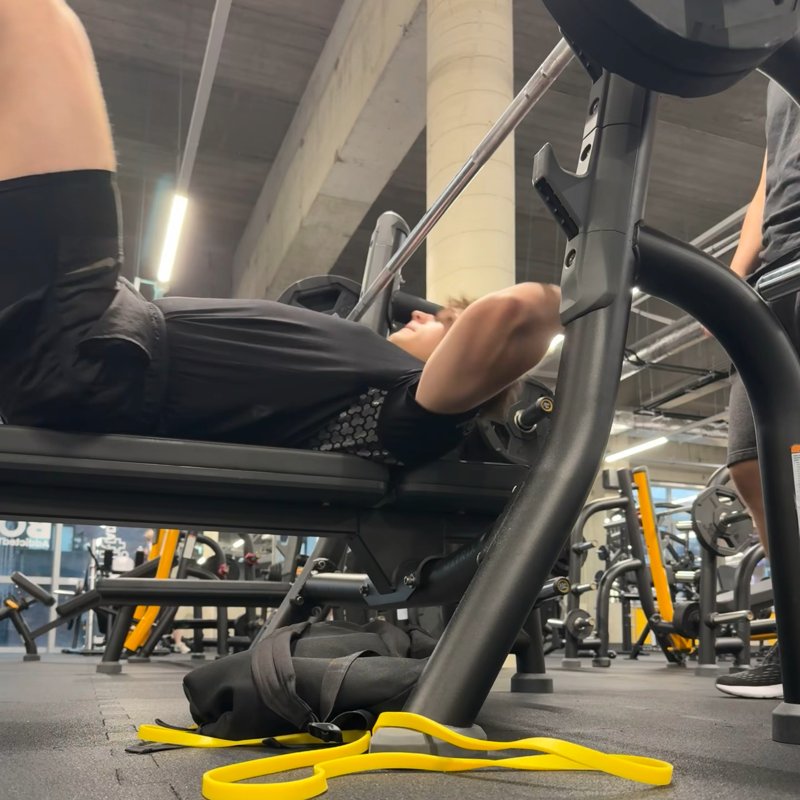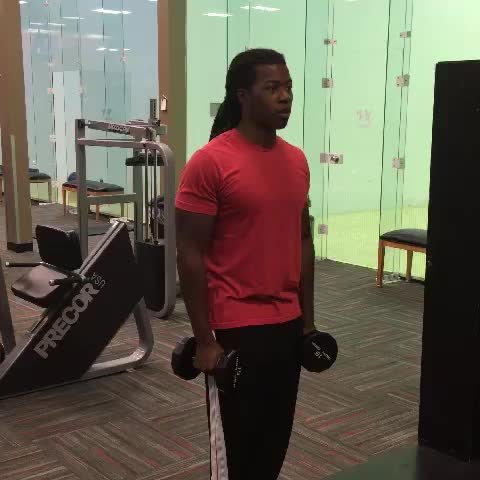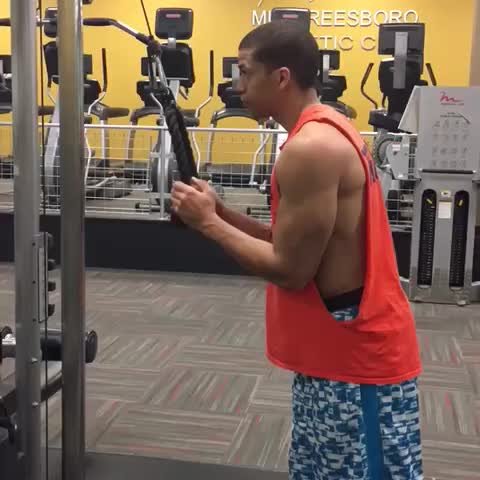Overhead Press: The Ultimate Guide
The overhead press is a true test of shoulder strength and stability. This detailed guide covers proper form, common mistakes, and effective programming to help you build impressive shoulders and upper body power.

Quick Facts
Key Benefit
Builds overhead pressing strength and impressive shoulder development
Primary Muscles
Anterior Deltoids, Medial Deltoids, Triceps
Secondary Muscles
Abdominals, Pectoralis Major, Pectoralis Minor, Traps
Equipment
Barbell, Power Rack (optional)
Difficulty
Intermediate
Type
Strength, Compound
In This Guide
Ready to master the Overhead Press?
Track your progress, see improvements over time, and build strength consistently.
Download GravitusAre you ready to master the Overhead Press? This guide will teach you everything you need to know about this foundational upper body exercise. The Overhead Press is one of the most effective exercises for developing impressive shoulder strength and complete upper body development. It tests and builds true upper body power. Whether you're looking to build impressive deltoids, increase pressing strength, or develop functional overhead power, this guide covers everything from proper form to programming strategies. Learn how to perform the overhead press safely and effectively to maximize your results and avoid common injuries.
Why the Overhead Press Is Worth Mastering
The Overhead Press is more than just another shoulder exercise in your arsenal. It's a fundamental movement that:
Builds Real-World Upper Body Strength
Develops the functional ability to press objects overhead, a movement pattern used in countless real-life situations.
Creates Balanced Shoulder Development
Works all three deltoid heads with emphasis on the anterior portion, creating symmetrical shoulder development.
Strengthens the Entire Kinetic Chain
Requires full-body tension from feet to fingertips, making it an excellent indicator of total-body strength and coordination.
Proper Overhead Press Form: Step-by-Step
Starting Position
- Grip the barbell with hands just outside shoulder width, with the bar resting across your front deltoids and upper chest.
- Position your forearms vertical when viewed from the front, with elbows slightly in front of the bar.
- Stand with feet hip-width apart, knees slightly soft, core braced, and glutes engaged to create a stable base.
The Movement
- Take a deep breath, brace your core, and begin pressing the bar vertically.
- As the bar approaches your face, move your head slightly backward to allow the bar to pass without hitting your nose or chin.
- Once the bar clears your head, move your head forward again and continue pressing until your arms are fully extended overhead.
Key Form Tips
Bar Position
At the top, the bar should be directly over shoulders and mid-foot, forming a straight line when viewed from the side.
Core Engagement
Keep core tight and glutes squeezed to prevent excessive arching of the lower back.
Head Movement
Move your head slightly backward as the bar passes your face, then forward again at the top.
Shoulder Drive
Focus on driving the bar with your shoulders rather than just pushing with your arms.
Wrist Position
Keep wrists neutral and bar positioned in the heel of your palm.
Breathing
Brace your core with a deep breath before initiating the press.
Muscles Worked in the Overhead Press
Primary Muscles
- anterior deltoids: The front portion of the shoulder muscles are the primary movers in the overhead press, responsible for lifting the weight overhead.
- medial deltoids: The side deltoids assist in stabilizing the shoulder joint and contribute to the pressing movement.
- triceps: The triceps extend the elbows as you press the weight upward.
Secondary Muscles
- pectoralis major: The upper pectoralis major assists in the initial phase of the pressing movement.
- traps: The trapezius muscles help stabilize the shoulder girdle and assist in the final phase of the press.
- abdominals: The abdominal and lower back muscles work isometrically to maintain posture and stability.
- pectoralis minor: These muscles help with scapular movement and stabilization during the press.
Common Mistakes and How to Avoid Them
Excessive arching of the lower back
Places strain on the spine and reduces core stability Fix it: Brace your core, squeeze your glutes, and consider using a belt for heavier sets
Flaring elbows out too wide
Creates inefficient pressing mechanics and can stress the shoulders Fix it: Keep forearms vertical when viewed from the front with elbows under or slightly in front of the bar
Overhead Press Variations
Beginner Variations
-
Seated Dumbbell Press
Pressing dumbbells overhead from a seated position provides more stability and is perfect for beginners learning the movement pattern.
-
Landmine Press
This angled pressing variation reduces stress on the shoulder joint while still training the pressing movement effectively.
Intermediate Variations
-
Push Press
Adding a leg drive to the overhead press allows you to handle more weight and build explosive power.
-
Z-Press
Pressing from a seated position on the floor with legs extended challenges your core stability and prevents excessive arching.
Advanced Variations
-
Behind the Neck Press
This variation requires excellent shoulder mobility and places more emphasis on the posterior and medial deltoids.
-
Single Arm Overhead Press
Performing the movement with one arm at a time increases core engagement and helps address imbalances between sides.
FAQs About the Overhead Press
The traditional overhead press (in front of the head) is recommended for most lifters. The behind-the-neck variation places the shoulders in an externally rotated, abducted position that can increase impingement risk, especially for those with limited shoulder mobility. Stick with the standard version for safety and effectiveness.
Wrist pain usually stems from allowing the bar to sit too far back in your hands, creating a bent-wrist position. Focus on gripping the bar low in your palm (closer to your wrist) and keeping your forearms vertical, with wrists neutral or only slightly extended. Wrist wraps can provide additional support for heavier sets.
Yes, the overhead press typically uses significantly less weight than squat, deadlift, or bench press. This is normal due to the biomechanical disadvantage of pressing directly against gravity with smaller muscle groups. Progress on the overhead press is often slower, with 2.5 lb increments being significant improvements.
Video Demonstrations
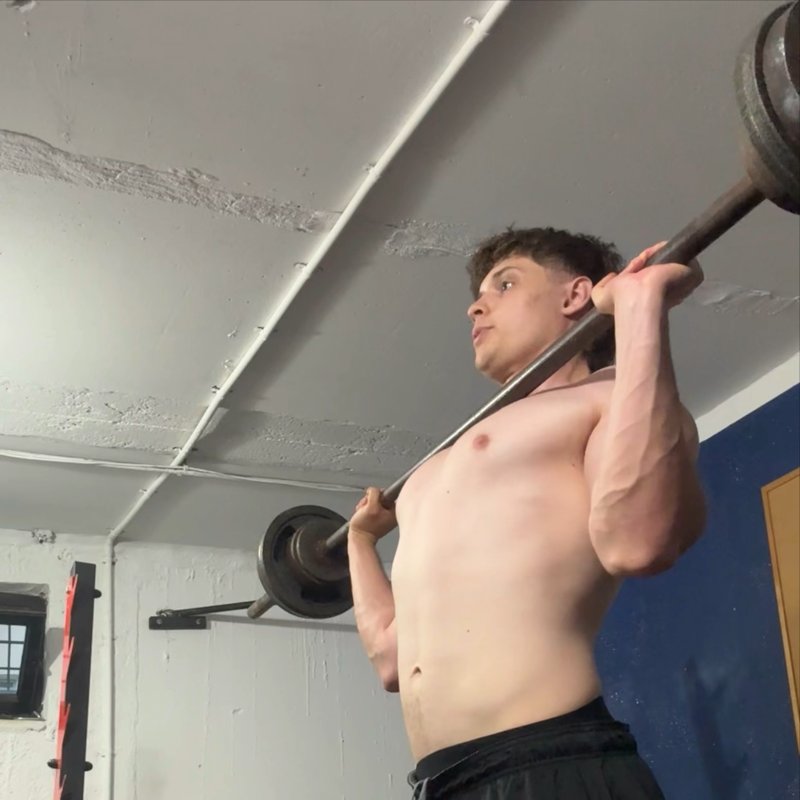
Log in to watch video demonstrations
Login to Watch3 video demonstrations available
Find more video demonstrations in the Gravitus app
Tips from the Community
-

Squeeze your glutes to protect your spine.
-

Don't over exaggerate your lock out at the top or else you will lose balance. Lock out the bar just enough behind your head, but not too far.
-

Be very patient with this exercise. If you’re doing A lot of Benching this exercise won’t progress as quickly. Some people out there like Matt Ogus are monsters when it comes to this exercise, but for many of us it does take time. Almost everyone I know that has progressed with this exercise got monster shoulders
-

Use a bigger than hip width stance for more stability, your elbows should be a bit in front of the barbell and keep your forearms perpendicular to the bar, point your toes out to engage the glutes
-

By slightly rotating hands inward (fingers toward each other) the bar will be directly over your forearm bones as opposed to hanging behind wrists
Track your progress with Gravitus
Download Gravitus to log your workouts, track your progress, and join a community of fitness enthusiasts.

Helpful Resources
One Rep Max Calculator
Find your one rep max for any exercise without maximal testing. Essential for developing effective strength training programs.
Calculate 1RMWorkout Programs
Follow structured workout programs created by fitness professionals to maximize your strength and muscle gains.
View Programs
